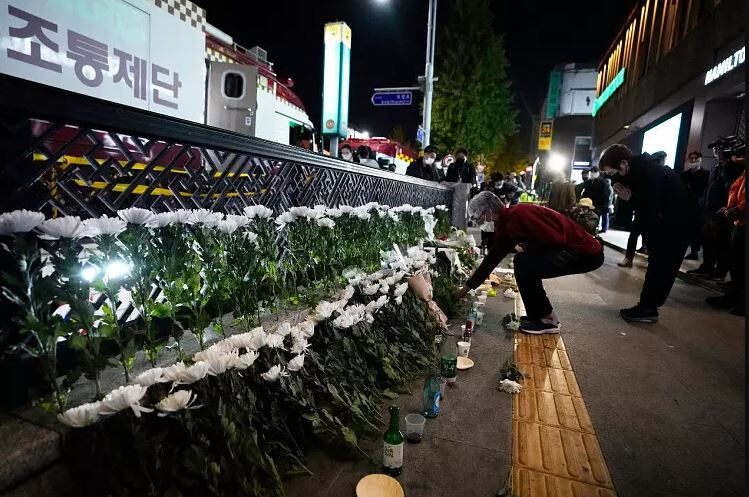It was intended to be a happy evening, with swarms of boisterous children dressed as zombies, princesses, and super heroes coming on one of Seoul’s most famous nightlife areas for their first Halloween party without restrictions since the outbreak.
Saturday night, people crammed into pubs and nightclubs playing the newest K-pop tunes and spilled out into the city’s Itaewon neighborhood’s narrow alleyways. They snacked on the Greek, Turkish, Italian, and other foreign cuisines for which the neighbourhood is renowned.
As the night became wilder and the crowd of revellers rose, many of them packed into an 11-foot-wide alleyway, creating a traffic jam that made it impossible to breathe and move. According to witnesses, there were few police officers there, and from inside the crowd came shouts of “push, push” and a large push. Then, they started to tumble, a mass of people crammed into a too-small area.
Zen Ogren, 32, was trapped in a crowded and stifling club down the tight lane, a corridor connecting a series of clubs to a major subway station and a favourite site for photographing. She said that at the club’s entrance, people were shouting, “Please don’t go, people are dying!” Although security personnel warned the throng not to jostle, several surged through and stepped on others who had fallen.
The catastrophe — one of South Korea’s biggest peacetime tragedies — and issues about the authorities’ obligation to control the throng have tarnished the country’s reputation as a technological and pop-culture powerhouse that is chronically prone to man-made calamities. It has also exacerbated the political troubles of the country’s ailing president, Yoon Suk Yeol, who was already suffering from poor support ratings and an increasing number of protesters calling for his resignation.
On Sunday evening, when the sun sank over Itaewon, a sombre and muted feeling permeated the area. The police shut down the area’s streets, where closed pubs and eateries displayed sympathy signs. On the sidewalks, flowers and booze served as improvised monuments to the victims.
Families of the deceased combed hospital morgues for their missing children, while the Seoul authorities received hundreds of calls about missing people. Choi Seon-mi waited for hours at a community centre to hear from her daughter, Park Ga-young, who had travelled to Seoul.
On Sunday, authorities, including the president and the mayor of Seoul, Oh Se-hoon, pledged to do all possible to make South Korea safer. However, they provided little explanations for the absence of crowd management, what transpired in the Itaewon alley, and why the nation has had recurrent calamities.
In 2014, sixteen people were murdered at an outdoor performance when the ventilation grate they were standing on collapsed. In the same year, a ferry capsized, killing over 300 persons, the majority of them were high school students on a field trip.
Choi Chang-woo, the head of the Citizens’ Alliance for a Safe Society, said, “Our society has made enormous strides in acquiring riches and constructing the economy, but we have fallen far behind in valuing human life.”
Ulas Cetinkaya, 36, a Turkish national who has worked at a kebab business in Itaewon for the last five years, has never seen such a large throng as on Saturday night. He anticipated a large crowd since it was one of the first celebrations after Covid limits were released, but was startled by the lack of police officers.
He said, “I don’t know how the cops weren’t anticipating it.” I blame the government for this.
In South Korea, the police are often so adept at crowd management that protest gatherings frequently seem organised. Tens of thousands of people march along roadways while singing protest slogans and even sweeping up litter behind them. Bright yellow-green jacketed police officers walk alongside the demonstrators, directing them and carefully diverting traffic.
Despite the fact that Halloween is not historically observed in South Korea, its popularity has increased over the last decade as Seoul has gotten more multicultural. Before the outbreak, Itaewon, a district largely identified with the city’s foreigners and American culture because to its closeness to a former U.S. military installation, was crowded with revellers in costume.
